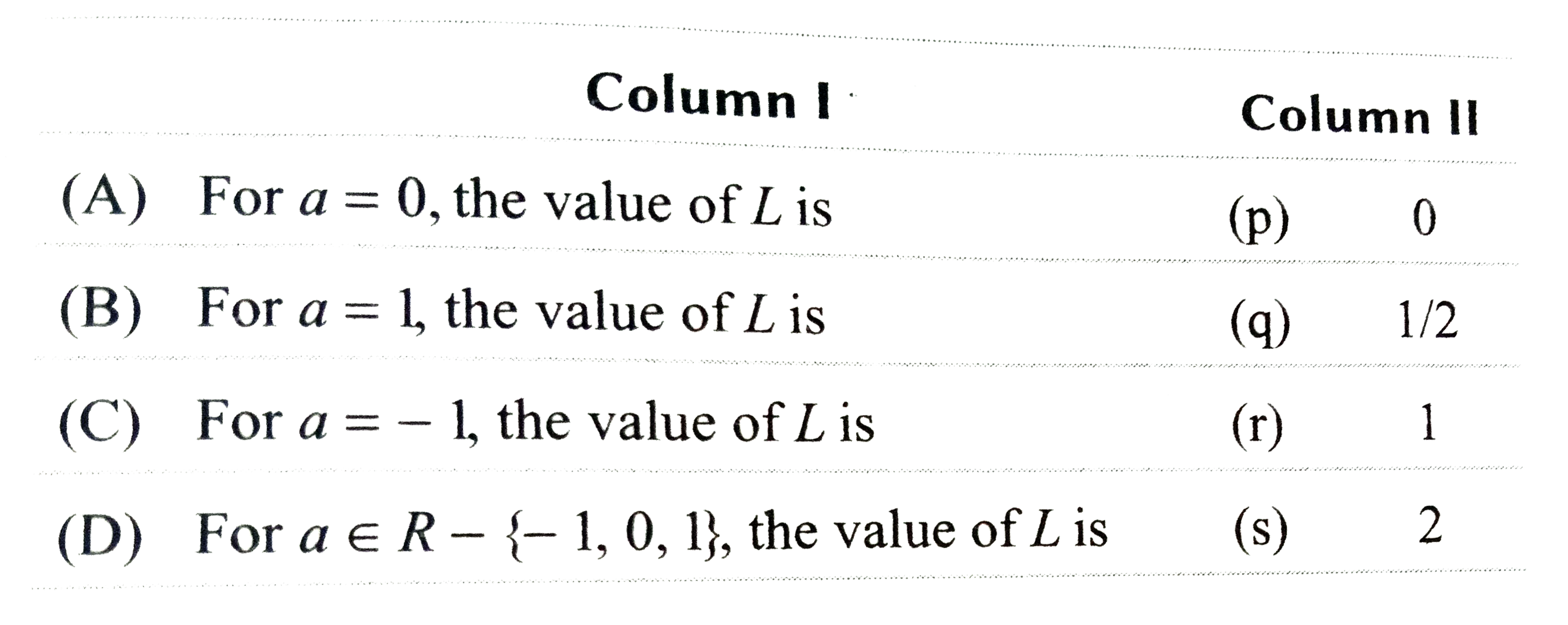Let y=∫y(x)u(x)f(t)dt, let us define dydxasdydx=v'(x)f(v(x))−u'(x)f(u(x)) and the equation of the tangent at (a,b)andy−b=(dydx)(a,b)(x−a).
If y=∫x4x2(Int)dt,thenlimx→0+dydx is equal to Solution in Punjabi
0
1
2
−1
The correct Answer is:A
Step by step video & image solution for Let y= int_(u(x))^(y(x)) f (t) dt, let us define (dy)/(dx) as (dy)/(dx)=v'(x) f (v(x)) - u' (x) f(u(x)) and the equation of the tangent at (a,b) and y-b=((dy)/(dx))(a,b) (x-a). If y=int_(x^(2))^(x^(4)) (In t) dt , "then" lim_(x to 0^(+)) (dy)/(dx) is equal to by Maths experts to help you in doubts & scoring excellent marks in Class 12 exams.
Updated on:21/07/2023Topper's Solved these Questions
- DEFINITE INTEGRALBOOK - ARIHANT MATHSCHAPTER - DEFINITE INTEGRALEXERCISE - Exercise (Matching Type Questions)
4 Videos
- DEFINITE INTEGRALBOOK - ARIHANT MATHSCHAPTER - DEFINITE INTEGRALEXERCISE - Exercise (Single Integer Answer Type Questions)
4 Videos
- DEFINITE INTEGRALBOOK - ARIHANT MATHSCHAPTER - DEFINITE INTEGRALEXERCISE - Exercise (More Than One Correct Option Type Questions)
10 Videos
- COORDINATE SYSTEM AND COORDINATES BOOK - ARIHANT MATHSCHAPTER - COORDINATE SYSTEM AND COORDINATES EXERCISE - Exercise (Questions Asked In Previous 13 Years Exam)
7 Videos
- DETERMINANTS BOOK - ARIHANT MATHSCHAPTER - DETERMINANTS EXERCISE - Exercise (Questions Asked In Previous 13 Years Exam)
18 Videos
Similar Questions
Let limT→∞1T∫T0(sinx+sinax)2dx=L, then

View SolutionIf f(x)=∞∑n=1sinnx4nand∫π0f(x)dx=log(mn), then the value of (m+n) is ….
View SolutionIf f(x)=[sin−1(sin2x)] (where, [] denotes the greatest integer function ), then
View SolutionIf a vertex of a triangle is (1, 1) and the mid-points of two side through this vertex are (-1, 2) and (3, 2), then centroid of the triangle is
View SolutionIf a2+b2+c2=−2, and f(x)= ∣∣ ∣ ∣∣1+a2x(1+b2)x(1+c2)x(1+a2)x1+b2x(1+c2)x(1+a2)x(1+b2)x1+c2x∣∣ ∣ ∣∣ , then f(x) is a polynomial of degree
View SolutionIf ∫y0cost2dt=∫x20sinttdx,theprovethatdydx=2sinx2xcosy2
View SolutionIf f is a continuous function on [a,b] and u(x) and v(x) are differentiable functions of x whose values lie in [a,b] then ddx{∫v(x)u(x)f(t)dt}=f(v(x))dv(x)dx−f(u(x))du(x)dx
View SolutionLet A1=∫x0(∫u0f(t)dt)dt and A2=∫x0f(u).(x−u) then A1A2 is equal to :
View SolutionIf y=∫v(x)u(x)f(t)dt, let us define dydx in a different manner as dydx=v'(x)f2(v(x))−u'(x)f2(u(x)) alnd the equation of the tangent at (a,b) as y−b=(dydx)(a,b)(x−a)
If y=∫x2xt2dt, then equation of tangent at x=1 is
View SolutionIf y=∫v(x)u(x)f(t)dt, let us define dydx in a different manner as dydx=v'(x)f2(v(x))−u'(x)f2(u(x)) alnd the equation of the tangent at (a,b) as y−b=(dydx)ab(x−a)
If F(x)=∫x1et2/2(1−t2)dt, then ddxF(x) at x=1 is
View SolutionIf y=∫v(x)u(x)f(t)dt, let us define dydx in a different manner as dydx=v'(x)f2(v(x))−u'(x)f2(u(x)) alnd the equation of the tangent at (a,b) as y−b=(dydx)ab(x−a)
if ∫x4x3lntdt, then limx→0+dydx is
View SolutionIf y =f(u) is differentiable function of u, and u=g(x) is a differentiable function of x, then prove that y= f [g(x)] is a differentiable function of x and dydx=dydu×dudx.
View SolutionIf x=f(t),y=g(t) are differentiable functions of parameter 't' then prove that y is a differentiable function of 'x' and
dydx=dydtdxdt,dxdt≠0
Hence find dydx if x=acost,y=asint.
View Solution(x+y)(dx−dy)=dx+dy, where x+y=u
View SolutionIf y=∫x0(t−1)(t−2)2dt, find x for which dydx=0.
View SolutionLet I1=∫ba(∫xaf(t)dt)dxandI2=∫ba(b−x)f(x)dx then
View Solution
